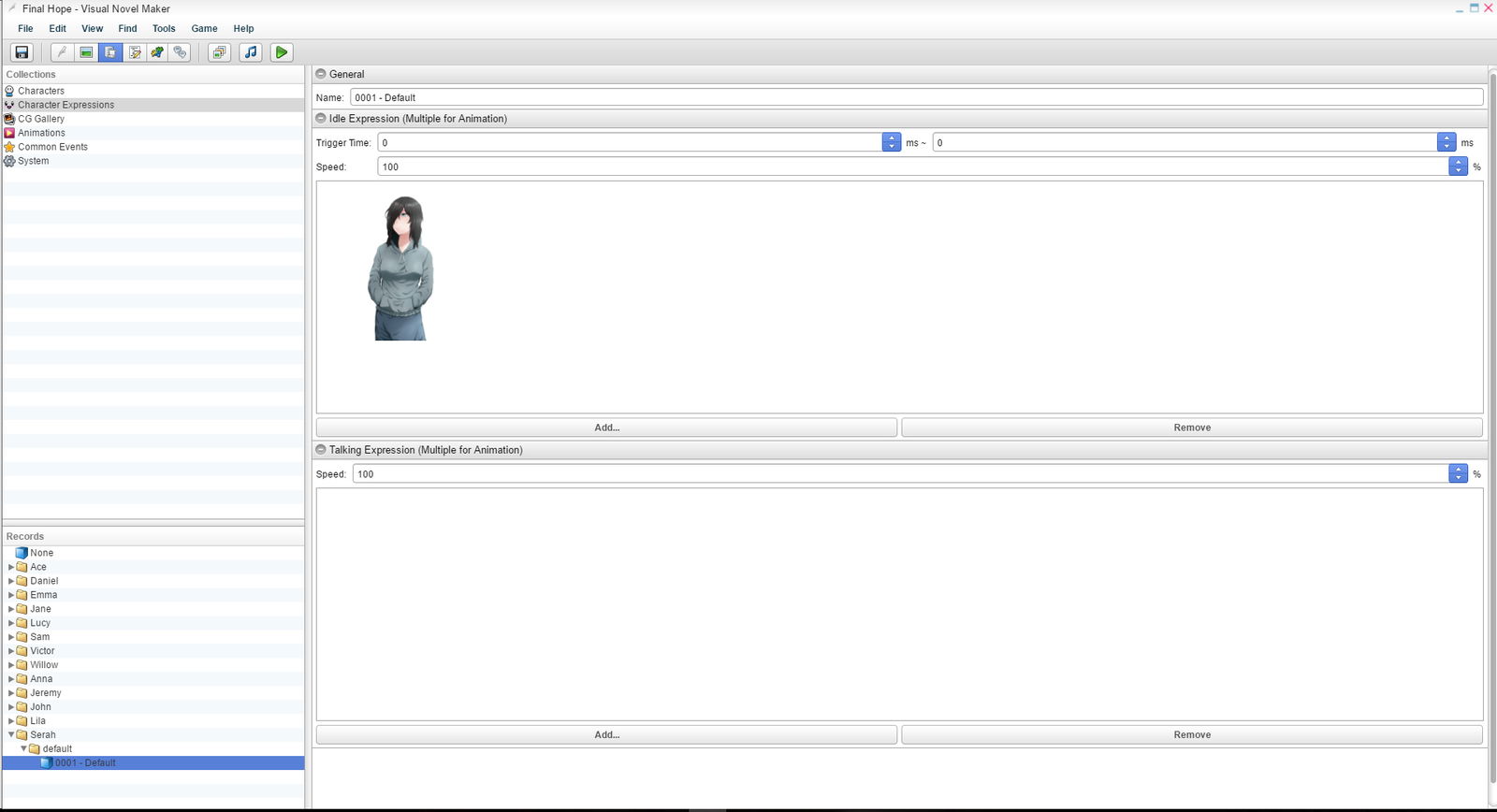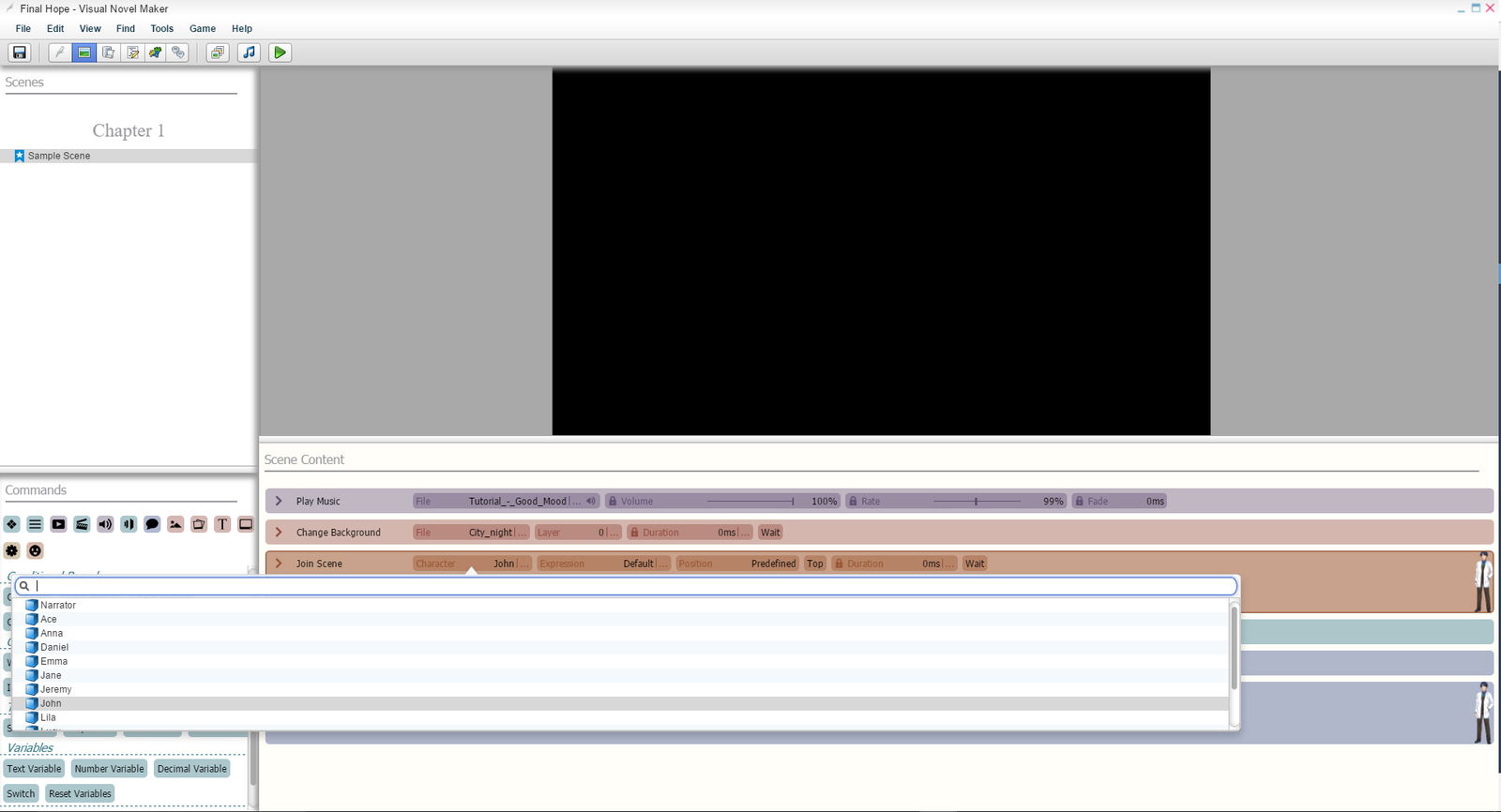Do you have a story in your mind that you wish that you could convey visually? Degica Games is here to help you with that with their latest software title Visual Novel Maker. Visual Novels are widely popular in Japan. They are a visual story that you can play through, most of which have many different routes you can take to experience a myriad of endings. With Visual Novel Maker, you are put at the helm as the creator of your own visual novel!
Title: Visual Novel Maker
Platform: PC (Steam)
Developer: Degica Games
Publisher: Degica Games
Release Date: November 16, 2017
Price: Not Listed
Visual Novel Maker is a very in-depth software that you can use to create your own Visual Novels with. It offers a very deep set of tools that can be used by beginners or advanced creators all the same. If you’re are knowledgeable with programming, there is a script editor so you can dig under the hood and customize your game exactly the way you want it; however, those without programming knowledge can still create games, but you are mostly limited to what the software provides for you.
The first screen that you are greeted with allows you to start a new project. Since I’ve been testing it out, I created one to try and recreate a scene from my own Light Novel, Final Hope. As you can see, projects that you are working on will appear in a list here for easy selection. Selecting New Project will take you right into the heart of the program so that you can begin creating.

The first stop is the user interface. While the Help section does claim that the interface is user-friendly, it is very busy and overwhelming at first glance. Everything works in layers and you can drag and drop commands in the left panel into your scene on the right. You can adjust where each command goes and even customize each command by expanding its menu and tweaking the different variables.

For example, in the Play Music field, you can adjust the volume, the playback speed and even the fade of a particular track. For the character background, you can adjust the duration as well as Easing and Animation effects, where it anchors to the display and so forth.
Once you have your scene and music, you’ll want to add a character to it. This is where I ran into the most frustration. You can easily select which character you want from the ones pre-loaded with the software, but if you’re really adventurous, you can add your own custom characters if you happen to have a JPG or a PNG (although PNG is recommended) of your character. To do this, you have to manually create a new File and Record in the database for the character. You need to create a new File and Record for their expression and add the artwork for them there. The Help section doesn’t really give any indication of what size art you need so when I imported my character, they were massive and only the top of her head covered the bottom half of my scene.

Another thing that is a bit frustrating is that you don’t get a proper preview of the character that you’re adding. Everything is selected in a Windows Explorer-like file system and the only preview you get is a tiny version of the character you selected on the far-right side of the Scene Content panel. You can run the scene to see what they look like, but it would be more useful if you can see that before bringing them into your scene.


What this software sorely needs is a proper tutorial. Sure, if you are an advanced user, a lot of this will come to you like second nature, but for those who are just beginning, things can be overwhelming at first. The Help section looks like a disorganized mess. While there are sections that do explain what to do with visual help, it doesn’t look visually appealing. This forces to user to heavily invest a lot of time reading rather than creating. The software needs to be more intuitive and inviting and while I was able to work my way around it by navigating through the different help sections, I still found the amount of information overwhelming.

The user interface is also very confusing, relying on tiny icons at the top with no real clear labels as to what button does what. This forces the user to go into the help section to learn what each of those icons do. Were text buttons really that big of a hassle to where they couldn’t have been used instead?
While the user interface isn’t the entirety of the software, it is the central hub that you will be spending most of your time interacting with. With that in mind, Degica Games would have put a lot more effort into the UI design than they have to make it even more beginner friendly. Do not mince my words; however, I’m not stating that is impossible to learn the software. You can pick it up after doing some digging and experimentation, I’m just saying that there are better ways to design a UI and this is not one of them.
As far as pre-loaded content is concerned, I was a bit underwhelmed with the selection. Backgrounds seem plentiful until you realize that they are just the same backgrounds in a daytime or nighttime setting. Some have more or less clutter (like the kitchen) to offer some variation, but it’s really not all that much. The character selection is also very limiting which means you will be spending time importing your own characters if you even have them. If you don’t and you’re not an artist or you don’t want to hire one, then you are stuck with what they give you.

The music selection is also very barebones with a handful of tracks that are only useful in certain situations. Again, you can import your own music, but if you’re looking to just create something “out of the box” the selection will make you wish that you have more to choose from.
What the software isn’t short on is the amount of commands you can add to your scene. The only issue I have here is the way the commands are named. Commands such as Else, Else If, Check Switch, Check Number, etc, don’t really offer up a lot of insight as to what they do, forcing the user to make another trip back to the Help section. It is; however, very easy to add a command to the scene. Simply left-click it and it will add itself to the scene or you can drag and drop it to position it on a different layer. Of course, once it is added, you can drag it between layers and move it anywhere you’d like.

All in all, Visual Novel Maker is a feature-rich software that allows for heavy customization of your own Visual Novels. With that being said, it was created with developers in mind and is certainly not user-friendly for a true novice or beginner. While it does offer a lot of drag and drop, it doesn’t flat out explain what each of the commands or settings for each command do. It relies on the user trudging through a Help section that could have been better integrated into the UI or even in the form of a proper tutorial.

It’s hard to give this a score because it does an amazing job of allowing developers the freedom of creation. Changing code and attributes that us terms familiar to programmers is a plus for them, but it leaves the less experienced out in left field to defend for themselves. It’s like Degica Games tried to reach a happy medium, but it just wasn’t intuitive enough. For a developer, Visual Novel Maker does get a four star rating just for the amount of creative freedom it allows, but for a beginner, the lack of pre-loaded content, non-intuitive UI and cumbersome Help section render the score down to a two out of five.
If you are a beginner, prepare to spend as much time learning the software as you will creating your game.
Official Steam Page: http://store.steampowered.com/app/495480/Visual_Novel_Maker/
Review Disclosure Statement: Visual Novel Maker for PC (Steam) was provided to us by Degica Games for review purposes. For more information on how we review video games and other media/technology, please go review our Review Guideline/Scoring Policy for more info.
Visual Novel Maker
Summary
Visual Novel Maker offers in-depth tools for advanced users and the ability to customize the code so that you can create the Visual Novel you desire; however, the interface, lack of selection of pre-loaded content and disorganized Help section can be very offputting for beginners. It shouldn’t scare beginners away, but you will need to put in some work and effort to learn the software if you want to create anything.


